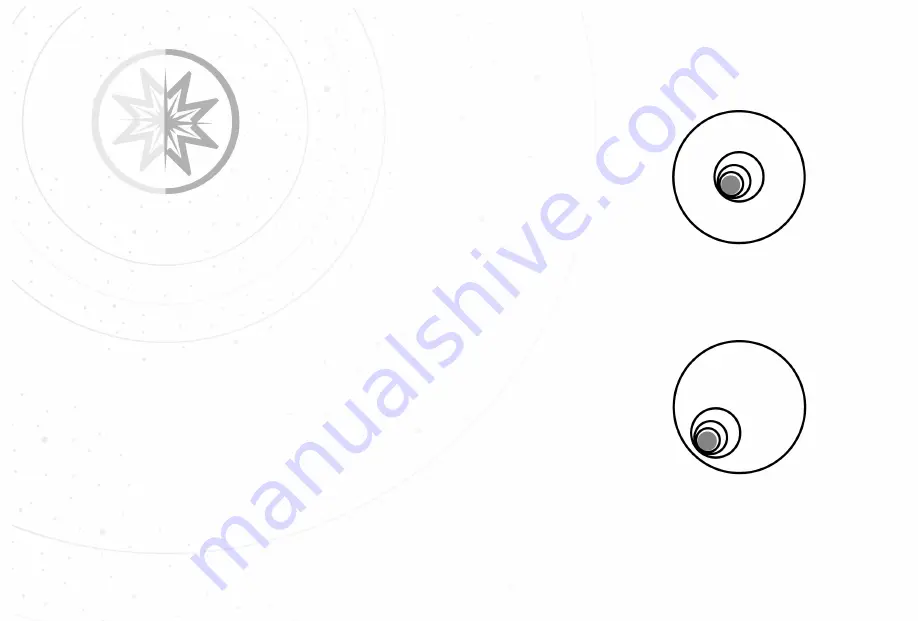
44
Collimation
With the collimation performed, you will want to test the accuracy of the
alignment on a star. Use the 26mm eyepiece and point the telescope at a
moderately bright (second or third magnitude) star, then center the star image
in the telescope’s field-of-view. With the star centered follow the method
below:
• Bring the star image slowly out of focus until one or more rings are visible
around the central disc. If the collimation was performed correctly, the
central star disk and rings will be concentric circles, with a dark spot dead
center within the out-of-focus star disk (this is the shadow of the
secondary
mirror
), as shown in
Figure 10.
(An improperly aligned telescope will
reveal elongated circles
(fig. 8),
with an off-center dark shadow.)
•If the out-of-focus star disk appears elongated (
fig. 8
), you will need to
adjust the
primary mirror
adjusting tilt screws of the
primary mirror cell
(fig. 3, #3)
•To adjust the
primary mirror tilt screws
, first unscrew several turns the
3 slotted-head
primary mirror cell locking screws
(fig. 3, #2), to allow
free turning movement of the tilt knobs.
Figure 8
Figure 9
43



























